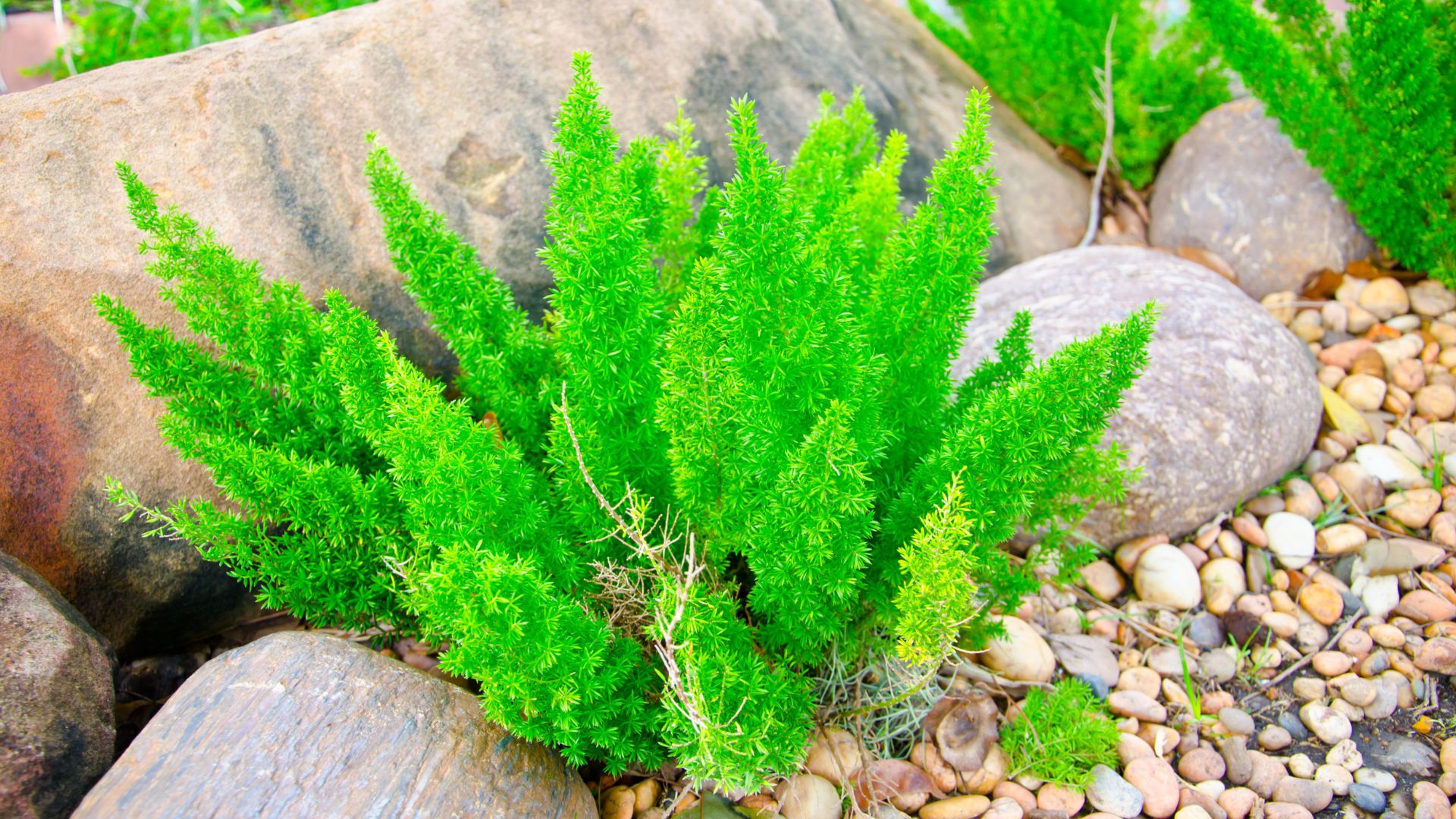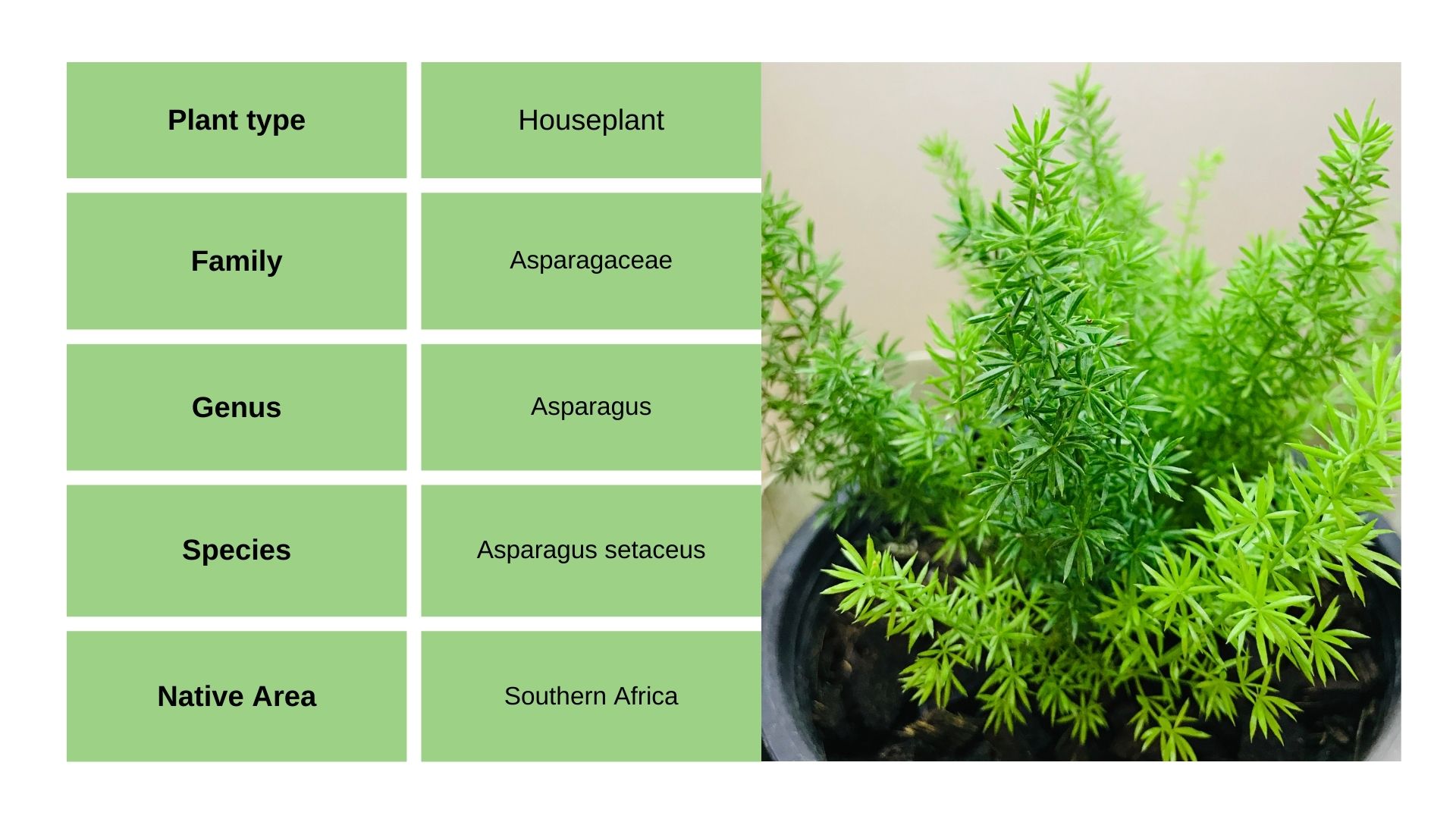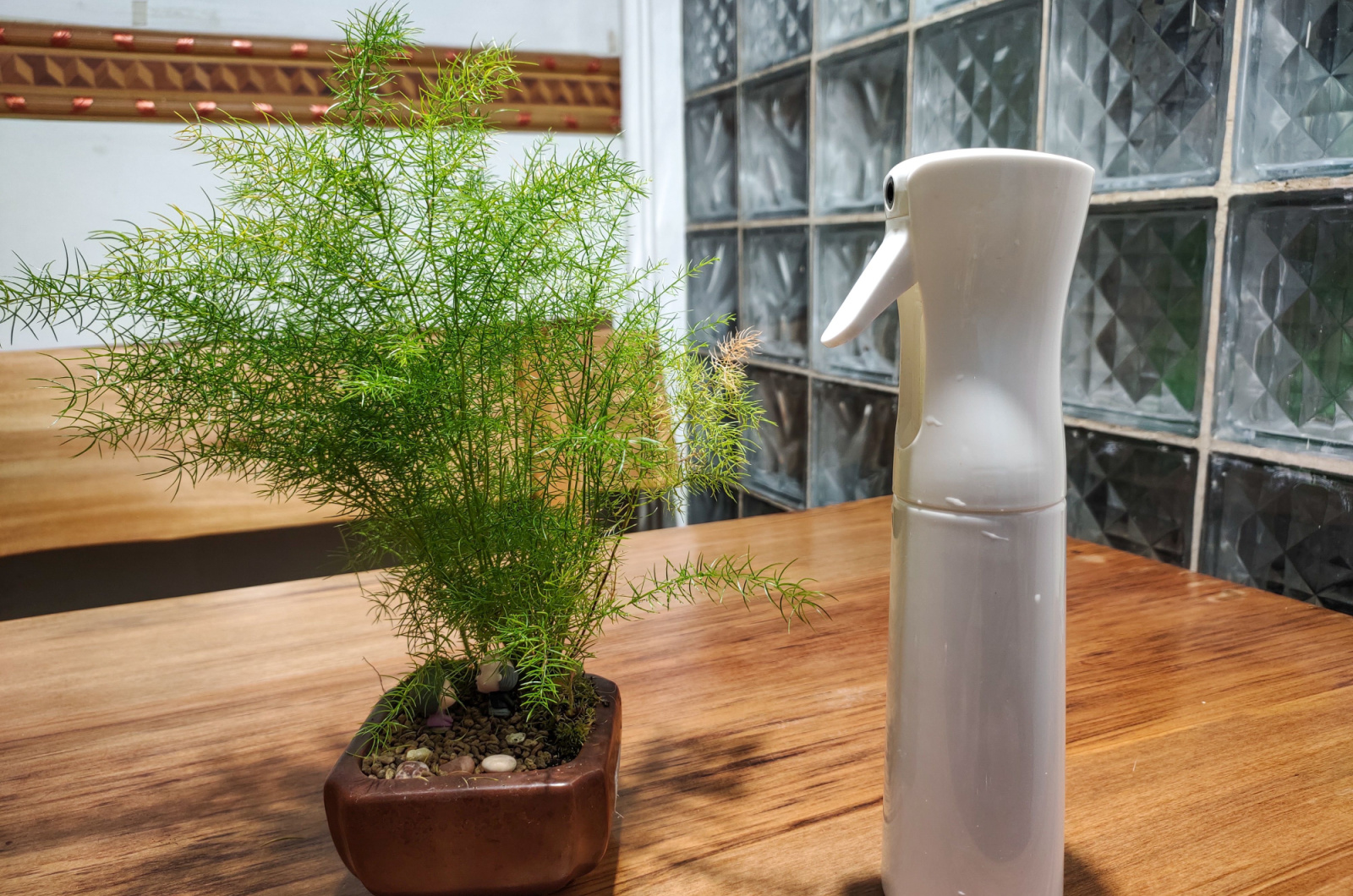For all the fern-lovers out there who struggle to grow different types of ferns, this plant might be just the right option for you. Why? Because Asparagus fern is actually not a fern at all!
Don’t worry, Asparagus setaceus is a large plant that will definitely stand out like any other fern, making a bold statement with its impressive size and unique charm.
Plus, these fern-like plants are super easy to grow. Just try to mimic their natural environment and watch them grow and thrive!
We’ll share some expert tips on how to grow and care for Asparagus ferns, so keep reading!
Asparagus Fern: Overview
So, is this plant a fern or not?
With plant names constantly changing, we all know that taxonomy can be a bit confusing. Asparagus setaceus belongs to the Asparagaceae family, which means that it is related to the edible asparagus.
However, the plant is highly similar to other popular ferns commonly grown indoors or in the garden. The Asparagus fern is a lush, bushy plant with feathery, bright green foliage that resembles delicate needles.
The fact that they are not true ferns might be a good thing, though, because they are much tougher and have less issues than any other fern!
These fluffy plants originate from Southern Africa, where they are used to growing in warm and humid conditions. Perfect for indoors or greenhouses, Asparagus ferns are widely grown in the US.
It’s important to note that you shouldn’t grow Asparagus fern outdoors because they are highly invasive.
Asparagus Fern Plant Care
Don’t worry, it’s super easy to take care of an Asparagus fern. Just like we said earlier, all you have to do is mimic its natural habitat – that means, warm temperatures and higher humidity.
Nonetheless, we will dig deeper and explain more about the growing requirements.
Let’s get started!
Light Requirements
In their forest-like environments, Asparagus ferns receive filtered sunlight through tall trees and shrubs. So, when grown indoors, these fern-like plants should grow in bright, indirect sunlight.
You can grow them in an east- or south-facing window that will protect the plants from direct sunlight exposure during the day. Remember to rotate the plant so that all sides of it receive equal amounts of sunlight.
Water Requirements
You might think that these ferns like constantly moist soil, but that’s far from the truth. In fact, these ferns are one of the best drought-tolerant plants that you can grow in the garden!
This is because they produce tuberous roots that manage to store plenty of water, keeping stems and leaves well-hydrated even when the water is scarce.
But regular watering will still keep the plant looking neat and healthy. What you should do is allow the soil to dry out before watering your fern again. Don’t water too much as it can lead to overwatering, which often causes root rot.
Reduce watering during fall and winter because the temperatures are lower, which means that the soil will need more time to dry out. Keep in mind that you should grow your fern in a pot with drainage holes in the bottom.
Soil Requirements
You can either use a regular houseplant potting mix or create one on your own by combining standard potting soil with perlite and coco coir. This mixture will provide good drainage and proper airflow.
The right growing substrate will prevent transplant shock and ensure that your plant is happy and healthy. Remember to repot your Asparagus fern every other year and refresh its soil.
Fertilizer Requirements
Asparagus ferns are not the types of houseplants that require constant feeding. However, they do benefit from an additional nutrient boost every now and then.
Add a standard balanced liquid fertilizer once or twice a month during the summer months. Follow the instructions on the packaging to avoid overfertilization.
Don’t fertilize during the colder months because the plant doesn’t need additional nutrients. Get back on track in the spring when signs of new growth appear.
Temperature & Humidity Requirements
Asparagus ferns thrive in temperatures between 65 to 75 degrees Fahrenheit. Any temperatures below 50 degrees can lead to stress and stunted growth.
Protect your ferns from cold drafts and extreme heat – don’t put your plant next to a drafty window or fireplace.
The ideal humidity levels are around 50%. However, this plant can also tolerate humidity as low as 30%. Boost humidity with a pebble tray or a humidifier.
Pruning
Trim off any damaged or diseased leaves. Pruning will promote bushier and healthier growth.
You should get rid of any diseased leaves as soon as you notice them. However, Asparagus ferns should be ideally pruned in late winter or early spring.
Propagation
You can propagate Asparagus ferns by division or seeds.
To propagate by division, check the roots and look for natural divisions. Cut it with clean pruning shears and separate them carefully. Plant the cutting in fresh soil and water thoroughly. Put it in bright, indirect light and watch it grow!
To propagate by seeds, simply plant the seeds in a light seedling mix and make sure that the soil is constantly moist. You can reduce watering once the new growth appears.
Common Problems With Asparagus Fern
Watch out for pests like mealybugs and spider mites. They will crawl all over your plant, leaving sticky residue or tiny webbings behind. Inspect the plant if you notice any changes.
Yellowing of the Asparagus’ leaves indicate overwatering, while browning indicates lack of humidity and overwatering. Leggy growth might result from lack of sunlight exposure.
If you notice any pale fronds, then your plant might be receiving too much direct sunlight. Fix these issues by following the plant care instructions!
Also read: How To Grow And Take Care Of A Plumosa Fern






